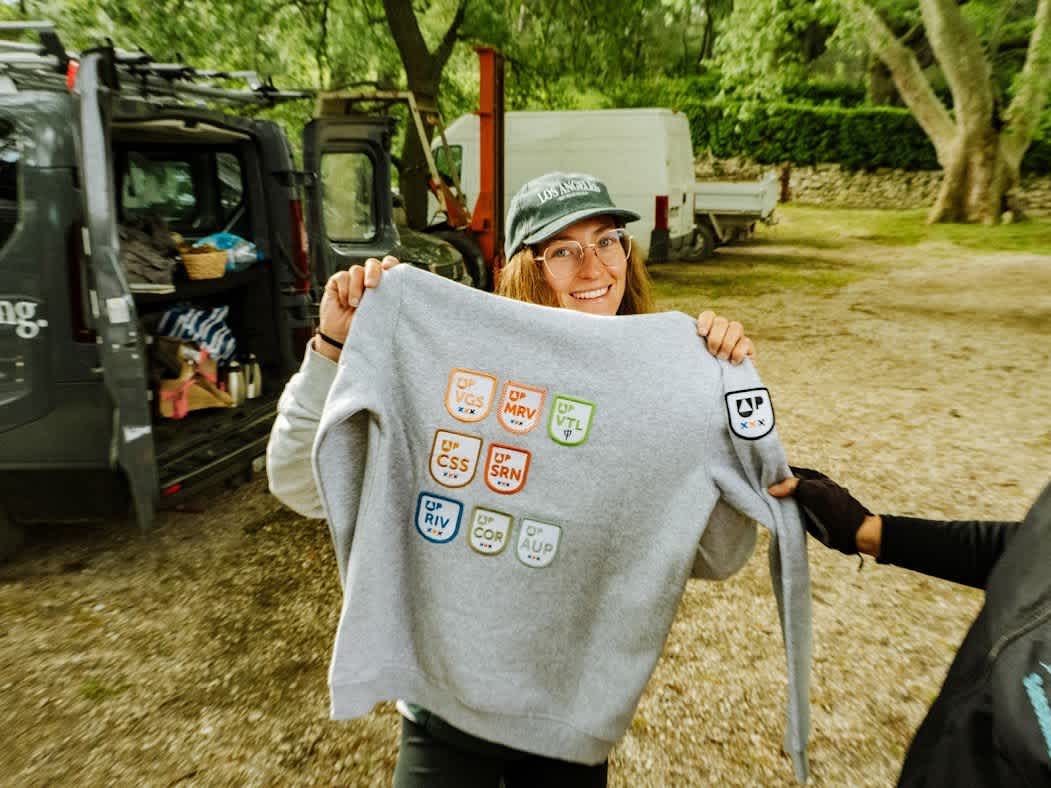How to take care of your rear-end on a multiday bike trip?

Point to point bike trips are becoming more and more popular but, depending on your kit, it can be a rude awakening for certain parts of your body!
Saddle discomfort is one of the main issues that can ruin a good weeks cycling. But rest assured, it’s not inevitable. In fact there’s some easy steps you can take that will make all the difference and we reveal all in this article.
1. Choose the right shorts

Padded shorts are a key ingredient for staying comfy in the saddle. They can reduce rubbing between thighs and the saddle, as well as supporting your muscles.
As with everything there’s a multitude of choices for men and women: with or without shoulder straps (otherwise known as “bibs”), thickness of pad (or “chamois”), leg legnth etc…
Choose one that fits your body best and the appropriate chamois for the length of time you’ll spend in the saddle. Whichever you choose a snug fit is crucial for avoiding folds, rubbing and irritation developing.
Its worth remembering that all shorts are designed to be worn WITHOUT underwear! The chamois is designed to keep stitching away from your skin and has an antibacterial treatment. Underwear will just increase the risk of irritation and can be really uncomfortable!
Here’s some things to bear in mind when choosing your padded shorts:
The chamois:
crucial for protecting all the saddle contact areas. The chamois comes in different thicknesses and densities for different disciplines and distances. It needs to be thick enough and positioned just right to avoid irritation and rubbing.
The shape:
this needs to be right for you and tight enough not to move and therefore rub with a pedalling action. Too tight though and you’ll risk affecting your leg circulation and affecting your breathing. There’s plenty of women-specific styles with specific shaped chamois and differing style bib straps.
The material:
important for the durability and comfort of your shorts. It should be breathable to help sweat wick away and therefore avoid irritation, but durable enough to withstand rubbing and constant wear and tear.
2. Bike set up

The wrong position on your bike can be a pain in the backside, literally! Adjusting you bike’s handlebar height, stem length and saddle height/position for a comfortable riding position is crucial in avoiding unnecessary discomfort.
It’s also important to adjust your riding position to avoid excessive pressure in just one area through using the hoods, drops and tops of your handlebars.
Don’t gorget to give your rear-end a break sometimes, roughly every couple of hours, to prevent a build up of pressure and muscular pain. Have a little stretch and walk around to maintain good blood circulation, and don’t forget to have a bite to eat at the same time!
3. Find the right saddle for you

The right saddle is your number one defence again saddle soreness. Too narrow or wide, too firm or soft, and not positioned correctly can all add up to be a right pain.
So it’s really important to find the right one for your body and your style of riding. Women’s saddles are generally wider than men’s in the sit bone area and they often have a cutout for the perineal area. As mentioned before the right position is also crucial, in terms of height, fore/aft position and tilt forwards to avoid pressure in the wrong places.
Here at GravelUp we have both mens and women’s specific saddles on our bikes so that you’re as comfortable as possible on your trip.

4. Use chamois cream

This is a type of cream specially formulated for cyclists to reduce rubbing in the nether regions, often with anti-bacterial properties to help keep irritation at bay. They are very efficient at this, as well as easing away any pain or irritation that might develop.
They are generally made to be lubricating and soothing, with ingredients such as aloe vera, and are applied directly onto your skin before (and after) each outing.
They are particularly useful on long distance rides to help reduce irritation caused by many tens/hundreds of thousands of pedal strokes, and for those with sensitive skin. They can also help to reduce irritation from sweating down there, and to calm everything down after a bit ride.
5. Post ride care

After a great day out riding and a long day in the saddle, a little bit of after care for your derriere goes a long way to helping prepare for the next day.
Here’s some advice to take care of down there:
Have a shower:
as soon as possible and don’t forget to wash down there gently!
Apply some moisturiser:
or after ride cream to sooth your skin. If you have some hot spots developing you can use some specific cream like Bepanthen or Sudocrem (yes nappy cream!) to target those areas.
Wear loose fitting clothes
post ride: avoid tight fitting trousers or underwear after your ride allow the sensitive skin down there to breathe.
If you have some irritation
: avoid cotton underwear. These can hold sweat/moisture against your skin and aggravate any irritated areas you may have. Technical under layers and synthetic fibres will transport this moisture better and aid recovery.
Looking to ride gravel with a group of enthusiasts?

Discover the ultimate gravel biking adventure with GravelUp on one of their 8 must-visit destinations across France and Europe, through some of the most stunning mountain ranges!
Whether you're a beginner or an experienced rider, set off on a 2 to 5-day exploration, either from our base camp or on a multi-day journey. Explore unique regions where gravel biking takes center stage, such as Norway, Andalusia, Ventoux, or the Vosges Mountains.
Which will be your next gravel destination?


